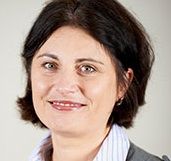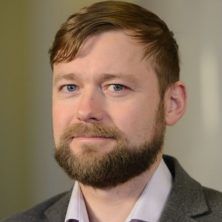The power of mass-media has been widely recognized. Goebbels mentioned in his speech to Nazi party members in Berlin in 1928 “Propaganda is not a matter for average minds, but rather a matter for practitioners. It is not supposed to be lovely or theoretically correct. I do not care if I give wonderful, aesthetically elegant speeches, or speak so that women cry. The point of a political speech is to persuade people of what we think right.” Nowadays, distribution of news is almost instant, thousands of journalists look for sensations to attract wider audience of readers and watchers.
Furthermore, the same event could be presented in a number of ways so that attitude of audience might be manipulated. This results in information wars in which different parties are fighting for influence over wider audience. Apart from the armed conflict, Ukraine and Russia have a fierce media war.
Many large countries have budgets to affect international opinion. Media giants like CNN or BBC could be found in the list of TV programs in majority of hotels worldwide. Russia is not an exclusion. Russia Today, an international multilingual TV network, started service in 2005. Since then its budget has tremendously increased from $30 mln to about $300 million. Number of employees has also soared from 300 at the very beginning to about 2,500 employees with 100 in Washington alone. It is not surprising that Spiegel calls Russia Today as “Ministry of Media Defence”.
Obviously, all these investments have resulted in an increase of audience. UK Office of Communication (Ofcom) reports in 2013 that Russia Today (RT) is in the list of top three news foreign providers (together with Al Jazeera and CNN). RT is more popular than Bloomberg TV, Deutsche Welle, France 24, and China’s CCTV News. RT claimed that its audience in UK reached in 2012 “an audience of 2.4 million UK viewers and the channel’s monthly audience is growing by 40% annually”. Given the fact that number of registered voters is about 16 million (local election in the UK, 2012), RT propaganda might have an effect on public opinion in the UK.
The channel’s biased opinion has already been highlighted in British press. Sara Firth, London-based correspondent, also resigned from RT in protest of the channel’s coverage of Malaysia Airlines crash. She twitted that “RT style guide Rule 1: It is ALWAYS *Ukraine’s fault (*add name as applicable)”. Few months earlier, Liz Wahl, Russia Today America anchor resigned live on air.
However, money does not smell. A British reporter Graham Phillips, nicknamed by Donbass terrorists “Our Grisha” (“Nash Grisha”), is employed by RT as a freelancer. He has made numerous of provocative reportages in Eastern Ukraine which were highlighted in Russian state media. Not surprisingly, he was deported from Ukraine with a 3-year ban for entry.
Furthermore, an army of internet bots is hired by Russian authorities to write in social media and comment on papers published in Western media. Guardian moderators believe that substantial share of comments is done by internet bots. Number of pro-Russian comment is sometimes 10-12 times higher than number of pro-Ukrainian opinions. For instance, 74 out of 244 comments were removed due to abuse. It is almost like an industry in Russia when an army of human users control numerous virtual profiles of unreal people and get paid for their activities.
Ukraine does not have any edge in information war with Russia. Not only international, but also a number of Ukrainian mass-media publish provocatively biased articles. Why is it so? The answer is quite simple: “money matters”. Military actions in the Eastern Ukraine require substantial funding, while the governmental institutions are inefficient and corrupted. Unfortunately, Ukrainian government faces severe budget constraints and involvement in media wars is postponed for future. Furthermore, any attempts of media regulation (e.g. banning anti-Ukrainian propaganda journalists from entry to Ukraine) are shown as actions against freedom of press in Ukraine.
Another problem for Ukrainian journalists is to obtain reliable and immediate information from events in the Eastern part of Ukraine or in Crimea. It is often difficult to collect evidence for reports or interviews in areas controlled by pro-Russian terrorists. Ukrainian media are not welcomed there. Media teams are in danger, as they are one of the main targets for terrorists. Evidence is provided by the recent capture and imprisonment of the Gromadske. TV journalist Аnastasiya Stanko and cameraman Illya Bezkorovayniy in Luhansk who were released only as a result of public pressure and extensive media coverage.
On the other opposite side of information war, Russian reporters and cameramen of the main Russian TV channels (e.g. LifeNews or Russia 24) freely operate in a combat zone of the occupied towns and villages and are often informed in advance of horrible events. Interestingly, locals have even started to fear Russian journalists, because they believe that when a LifeNews team arrives, it means that some provocation is planned, which will be shown on Kremlin-controlled Russian TV channels. In contrast, Ukrainian journalists often lack information from the combat zone. In such conditions, they have to rely on posts in social media and shared information, which can easily lead to a distortion of the facts and the rapid spread of fakes.
The need to quickly indentify a fake and to refute false information was already imperative during the events in Crimea in March 2014. As a result, the idea to create the website StopFake.org brought together professional journalists and volunteers, who began their work with gathering unverified facts and finding evidence to refute fake messages, pictures and videos. As the founders of the website explained, the main idea was to fight primitive and aggressive Russian propaganda and misinformation. The site is published in Russian and English. The Russian language is chosen to focus on residents of Eastern Ukraine, most of which get their information from Russian news media.
StopFake has successfully exposed many misused photos and videos during the Crimean invasion. For example, in many occasions the authors prove the presence of Russian soldiers and army machinery in Crimea just by careful studying the pictures from Crimea published by Russian media, where symbols on army uniforms and number plates on the army vehicles could be indentified and linked to particular Russian military units. The urgent need of this work has been confirmed by the rapidly growing popularity of StopFake. According to Google Analytics, StopFake gathers over 1.5 million unique visitors a month and, according to Iurii Panin, a TV news production instructor at the Mohyla Academy, Kyiv, about one quarter of the website’s readership is from Russia.
The most popular Ukrainian TV channels (e.g. Inter or 1+1) are not able or just do not want to develop own high-quality content. For example, Inter TV channel, 29% of which belongs to Russian ORT, fills Saturday prime time with only 35 minutes of news while the rest of time is used for Russian TV series (16.08.2014 17:55-20:00 Don’t leave me, Lubov; 20:35-00:35 I still love you). In this situation it is extremely important to develop public television. Hromadske.TV project, one of the best media initiatives in Ukraine over last few years, started last year within few month it attracted wide audience. During peak times more than hundred thousand people watched it online. Hromadske’s journalists created a number of documentaries on situation in the Eastern Ukraine or anti-corruptions investigations. Potentially, this venture could play a role in monitoring reform implementation in the whole country. In the medium run, development of regional offices and parallel broadcasting in English could improve visibility of this initiative.
There is always a question: “What else should we do?” One might think about a number of initiatives. First, StopFake portal could transform in an independent and reliable news agency. This agency could create and coordinate pool of army of volunteers and freelancer journalists. Second, a system of grants has to be introduced instead of direct support of regional TV stations. These grants might improve quality control of regional content and promote development of regional public stations (a la Hromadska in Donetsk). Third, it is important to enforce transparency of mass media ownership. Mass media is a strategic industry and all attempts of owners to affect freedom of press should be stopped. Last but not least, Ukraine should take a proactive role in setting its own media agenda. Instead of taking a defensive position, which often means reacting to the Russian propaganda by refuting misinformation, Ukraine can concentrate on creating its own information strategy. For instance, a positive image of Ukrainian army or internally displaced people, as well as explanations of new initiatives of government, should be delivered to the Ukrainian audience.
Attention
The authors do not work for, consult to, own shares in or receive funding from any company or organization that would benefit from this article, and have no relevant affiliations




